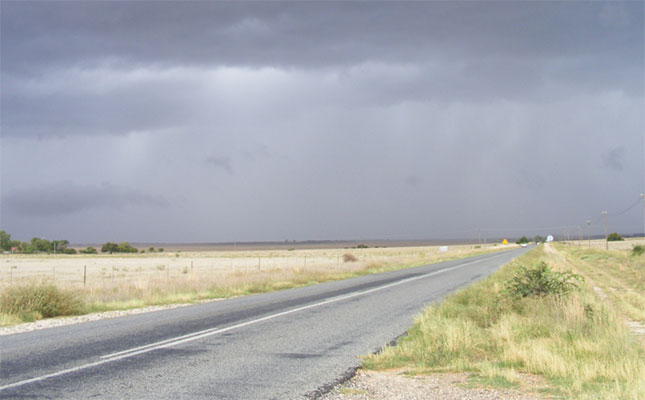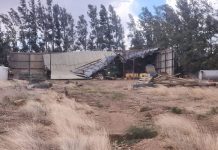
According to the SA Weather Service, Heilbron in the Free State received 212mm in December, compared with the usual monthly average of 102mm. At total of 249mm fell in Amersfoort in Mpumalanga, and reports of crop damage were received.
This contrasted dramatically with parts of the Northern Cape. Fraserberg, for example, registered only 3mm in December, which was 13% of its monthly average of 23mm. Drought-stricken Calvinia, in the winter rainfall area, received just 1mm of rain.
Rainfall figures for Free State over December varied significantly. Heilbron topped the rainfall log with 212mm, followed by Frankfort at 146mm. Koffiefontein received only 9mm for the month, just 16% of its average of 54mm.
Free State Agriculture president Francois Wilken told Farmer’s Weekly that he was concerned about farmers in the west and south of the province.
“Their cash flow is depleted. One farmer in Bethulie told me he would have to stop feeding his livestock,” he said.
Very low dam levels
In the Western Cape, Cape Town instituted level 6 water restrictions on 1 January. The average level of dams supplying the city was at 31% on 2 January, according to the online ‘Day Zero’ dashboard.
In the Eastern Cape, the situation remained dire in large parts of the interior. According to Agri Eastern Cape president, Doug Stern, the areas of Steytlerville and Willowmore received between 35% and 38% of their annual average in 2017.
“The previous year they were also well below average,” he said.
Stern added that certain coastal areas had received good rain but areas in the vicinity of Port Elizabeth served by the Kouga Dam, including the citrus-producing parts around Hankey and Patensie, were in trouble.
“They’ve stopped vegetable production there,” he said.
According to online statistics provided by the Nelson Mandela Bay Municipality, the level of the Kouga Dam was at 10,85% on 3 January.
Rain on the horizon
Johan van den Berg, manager of specialised crop insurance at Santam Agriculture, said that rainfall in December and the first part of January was poorer than originally predicted, particularly over the central to western parts of the country.
He said that rainfall in the western Free State and North West had been sporadic. This meant that many farmers had been unable to plant maize in areas such as Bultfontein, Hertzogville and Petrusville, as well as Bloemhof and Schweizer-Reneke.
In the eastern summer planting area, including Mpumalanga, most farmers had been able to plant but some were now in desperate need of follow-up rain to replenish soil moisture levels. “Rain over the next three weeks is critical,” he said.
Van den Berg added that, by contrast, coastal regions in KwaZulu-Natal, the Eastern Cape and the Garden Route, as well as the KZN interior, had had a fair amount of rain.
He ascribed the dry spell to cyclone activity over the Indian Ocean to the north of Madagascar that had drawn away moisture.
However, he said that due to the La Niña weather phenomenon, there was a reasonable possibility of rain in the second half of January.










